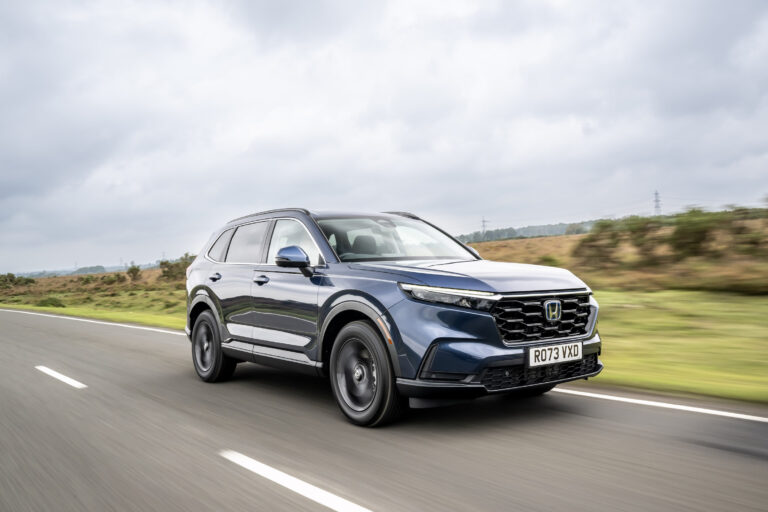At first glance, the sixth-generation Honda CRV holds little surprises. And, for many, that will be exactly what they want.
The CRV has sold well from being a pretty conservative SUV that’s sold well and has gained plenty of loyal supporters and repeat buyers over the years. This latest model, longer and wider with new, but familiar, styling doesn’t look to be that much of a change from that continuing rule book.
Except for a couple of things. For starters, the market has changed around it. The SUV market is up 26% and 13 of the best selling cars in the UK are SUVs. Many of them are bought by people with their own money too, rather than as a company car, so this is a strong retail sector, keeping residual values strong. It’s packed with strong contenders too like the Kia Sportage, Hyundai Tucson, VW Tiguan and Toyota’s RAV4.
The CRV itself has changed too. For the first time in Europe, there’s this plug-in hybrid version, alongside a hybrid version, which should help to bolster its appeal still further. But is that enough in this ever-more competitive sector?
HONDA CRV PHEV – DESIGN
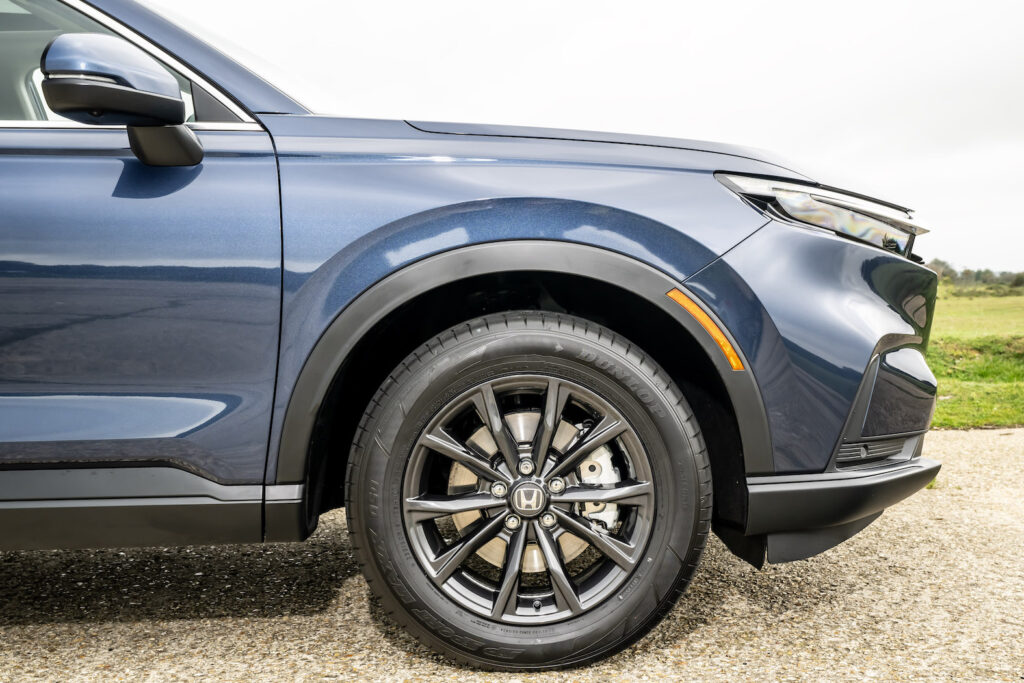
There’s no real surprises here. It might be the sixth-generation of the Honda CRV, but the reality is that it’s still easily recognisable and won’t deter past buyers of the car.
Having said that though, there’s a large over-sized front grille that dominates the look of the big Honda together with slim headlights – quite a departure from the chrome-dominated looks of past models.
The look of the back is similar to before too with upright rear lights turning into the tailgate and not entirely unlike the Volvo XC60. Again though, it’s pretty conservative and while it certainly won’t offend anyone, it doesn’t have the stylish touches of, say the Hyundai Tucson or Kia Sportage.
HONDA CRV PHEV – POWER AND RANGE
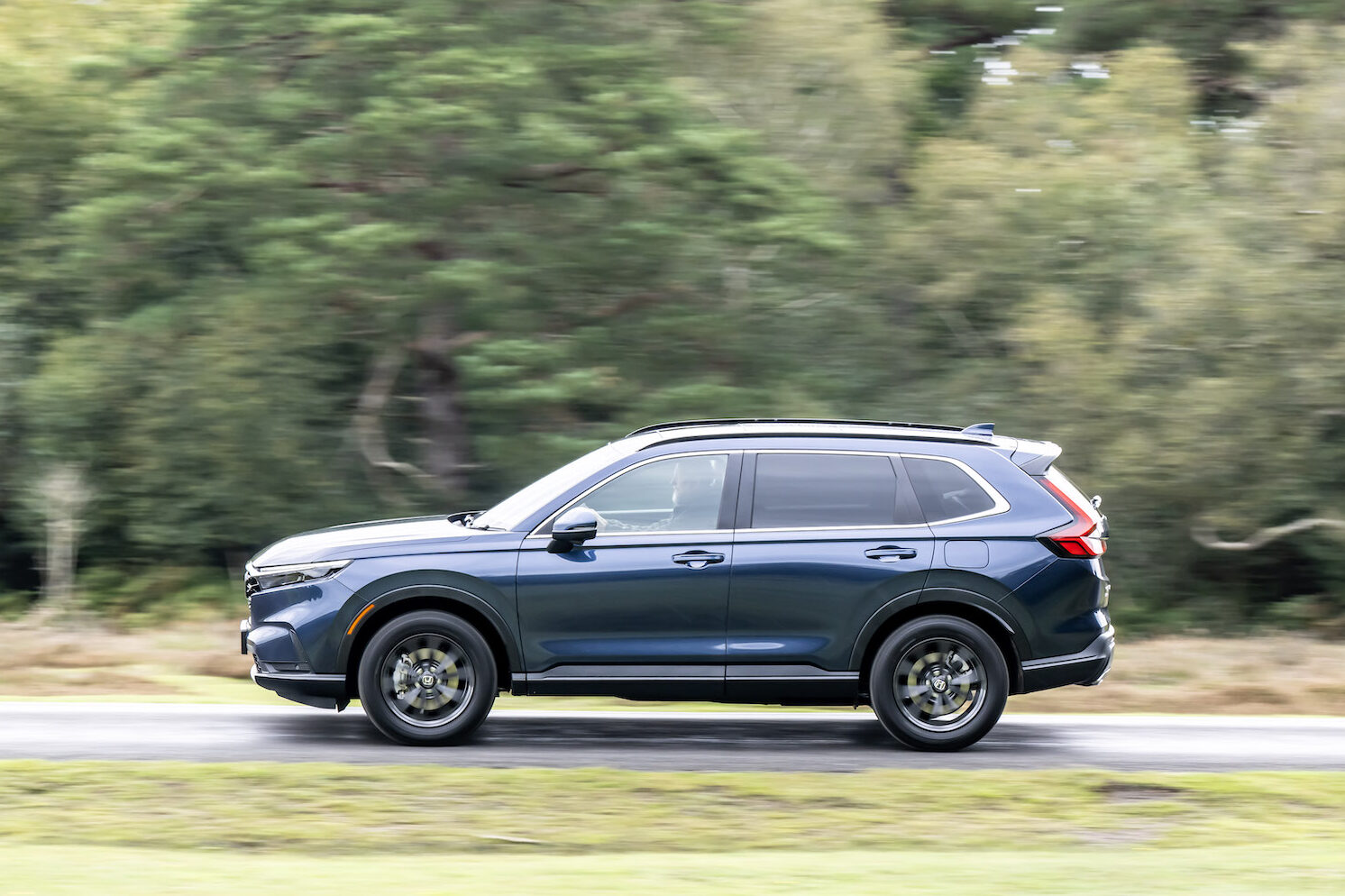
There’s only one version of the CRV Plug-In Hybrid in Advance tech trim with a 2.0-litre engine linked to a substantial 17.7kWh battery. That’s enough to give it a 50-mile all-electric range and just 18g/km emissions.
Performance-wise, that’s enough to give it a 9.4 second 0 to 60mph time and 121mph top speed and Honda has worked on the performance of the CRV’s charging too, boasting a 2.5hour full charge time on a home charger.
There’s a couple of unusual factors about this PHEV version of the CRV however compared to its standard hybrid sister version. The first is that, unlike the mild-hybrid, this plug-in hybrid version of the CRV doesn’t come as a four-wheel drive model. That’s odd as it’s unlike most other models in the sector which tend to be the reverse (with the petrol engine driving the front wheels and the batteries driving the rear). On the CRV however, the forward position of the batteries makes that impossible (although it does benefit boot space – more of which later).
But while that lack of 4WD might be a downside for some, the PHEV model does make up for that with its towing weight, which is double the standard hybrid car – 1500kg versus 750kg.
HONDA CRV PHEV – ON THE ROAD
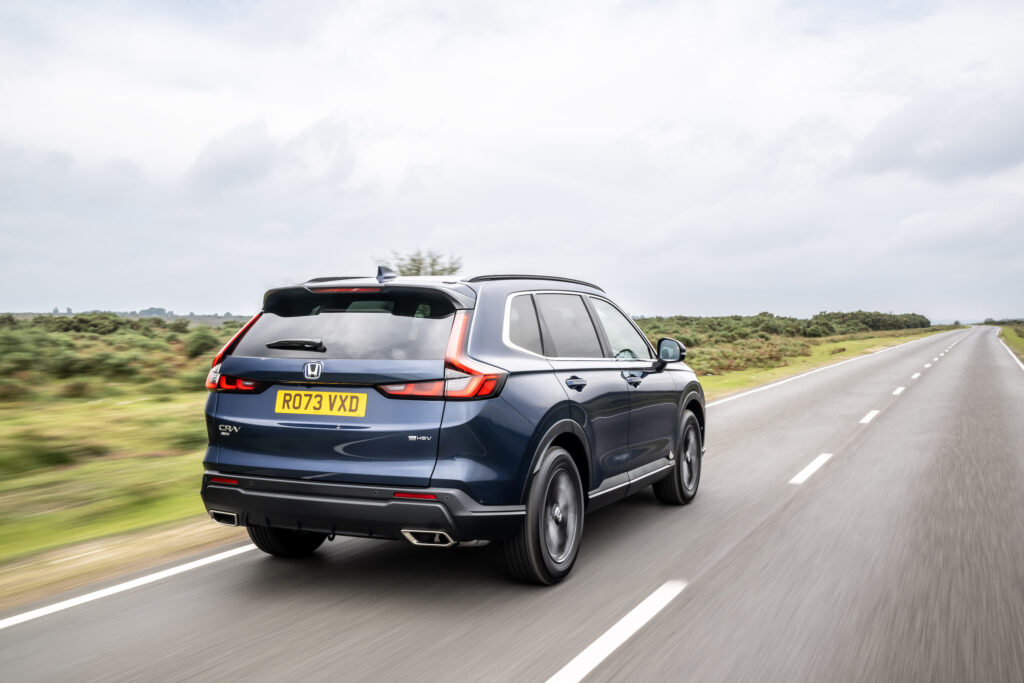
Given its predecessors, its very nature and also its dimension growth, few potential owners are going to be throwing this new Honda CRV through corners with enthusiasm.
The reality is that it feels like a big car on the road too and, at 1.9 tonnes, it’s a heavy one too. In fact, as great as that big 17.7kWh battery is for its 50 mile EV range, it also bumps the CRV’s kerb weight up an extra 100kg over the standard hybrid.
That’s something that you can certainly tell from behind the wheel too. The big Honda’s ride is pretty good, but there’s simple little to no connection from the road to the driver leaving you with an entirely clinical feeling of the process.
That weight makes itself more than apparent as well, so it can feel slightly lumbering at times, especially if you need to make a rapid change of direction. This is definitely not a driver’s car, and to be fair to the CRV not many are going to be buying it as such, but the Tucson and Sportage definitely feel more lithe on the road.
Furthermore, like the fully electric Honda eNY1, the regenerative braking system could be a lot better too and needs some fine tuning. While there are four different levels of regenerative braking to choose from, operated via the paddles behind the steering wheel, even the highest is not particularly strong.
But worse yet, once you’ve set the braking level you want, it doesn’t stay in that level unless you’ve selected B mode and even then that seems to be a little hit and miss. It’s a really odd system that, again like the eNY1, makes you wonder if Honda’s engineers even looked at the other systems that have been on the market in rivals for years. It’s a rare oversight and we’d expect from Honda.
HONDA CRV PHEV – INTERIOR
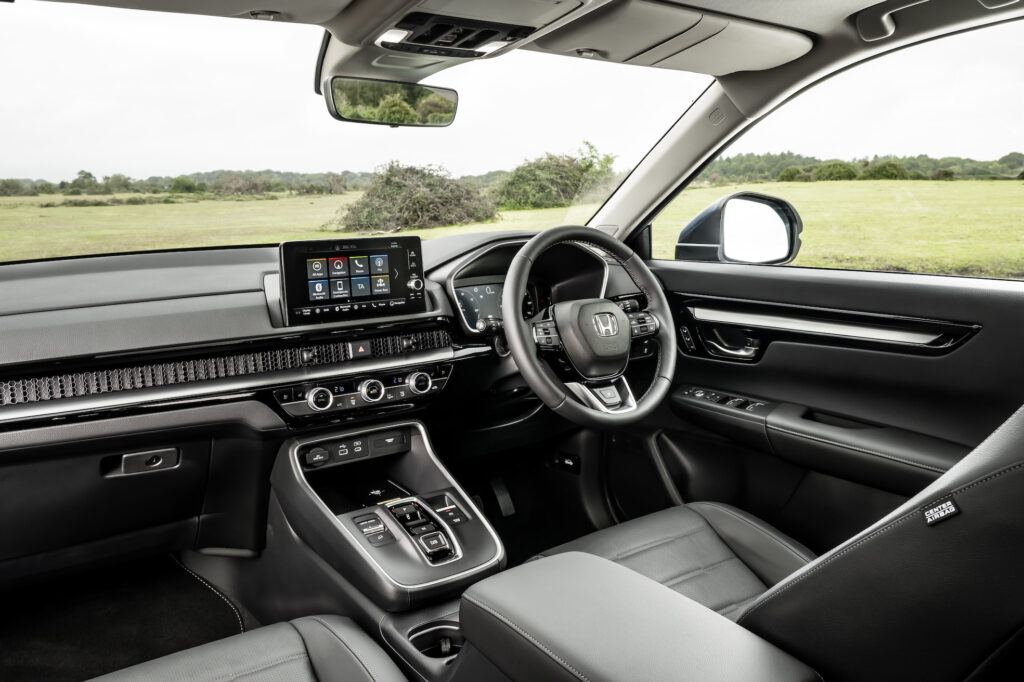
Again, like the exterior styling, there’s not much inside that’s going to put people off the Honda. Build quality is, as always for Honda, immaculate and while more of the plastics could be soft-touch or more pleasing to the eye, you know that it’s going to look and feel exactly the same at 10,000 miles and 100,000 miles.
It’s very traditional and might lack some of the design flair of its competition, but it all just works and for most CRV buyers that will be all they want. We especially like the honeycomb finish that runs across the width of the dashboard with the vents that’s reminiscent of old Saabs.
It’s also big. There’s plenty of head and legroom in the front and rear and there’s a big 617-litre boot that rises to 1728 litres with the rear seats folded down. This is another benefit of that PHEV front-wheel drive only powertrain too as the standard hybrid model’s figures are 579 and 1634 litres respectively. Not a massive difference admittedly, but it all helps.
SUMMARY
As we said at the start, for traditional CRV buyers, there’s little here that’s really going to frighten them away. The CRV is spacious, well-built and highly practical – you could have said that about the previous five versions that went before and the same is true of this sixth generation version.
That’s not to say that it’s without a few surprises mind you. The first of which is that lack of four-wheel drive. Will that bother drivers? Maybe not, but there’s something ironic in the fact that many wanting to take advantage of the PHEV’s extra towing capacity for a caravan or horse-box might also want to have four-wheel drive which they can’t have. That also swims against the tide of the rest of its rivals and while that can be a good thing on occasion, in this sector we’re not convinced.
Then there’s the price which we haven’t yet mentioned. At £53,995, this plug-in hybrid is £5000 over the standard hybrid model – which is not small change. Even more so, when you consider that most CRV buyers are retail customers, not those buying it with company money, in which case that £5000 is going to be even more painful to stomach.
This latest Honda CRV is a perfectly good car, but it’s not without flaws, particularly with that price differential and those technical shortfalls. It’s undoubtedly the most capable and best-all-rounder CRV yet, but whether it has what it takes to take on rivals in an increasingly competitive market, is another matter.
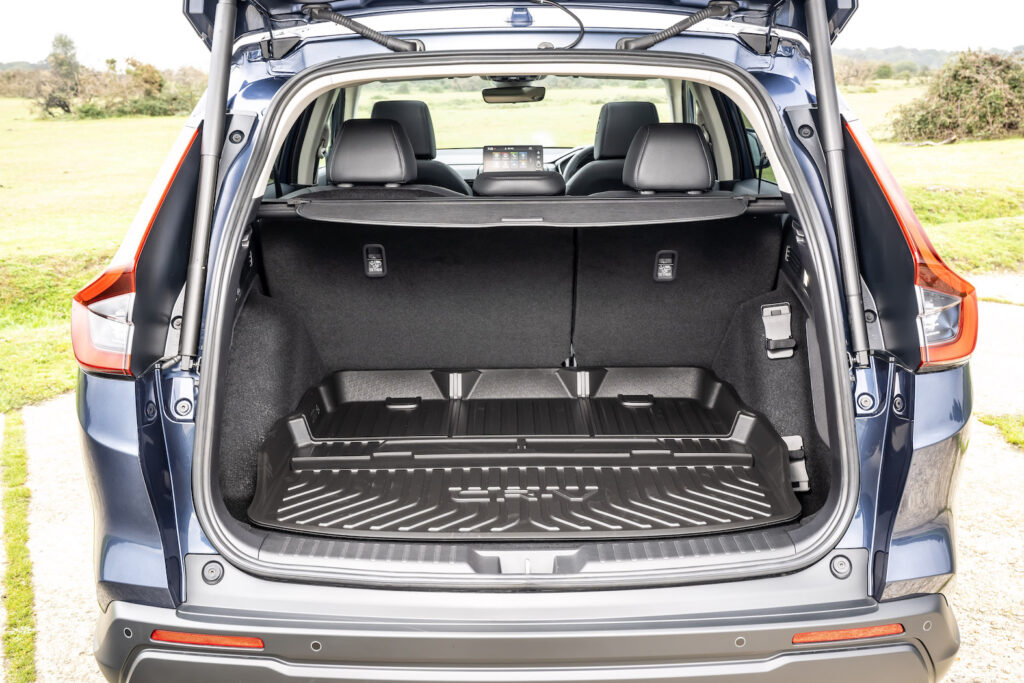
FACT BOX
Model: Honda CRV PHEV
Price: from £53,995
Power: Petrol – 2.0-litre; Battery – 17.7kWh
Electric range: 50 miles
Average fuel consumption: 353.1mpg
CO2 emissions: 18g/km
Rating: 7/10

